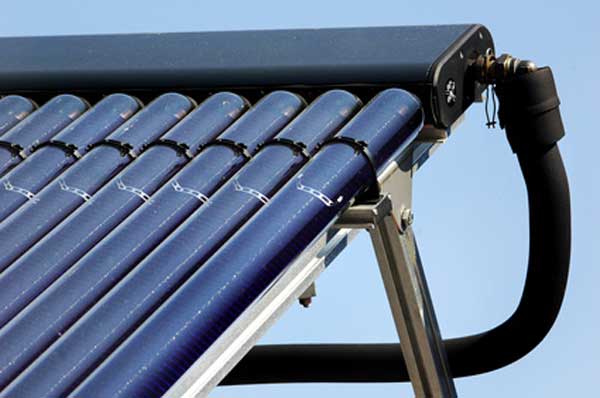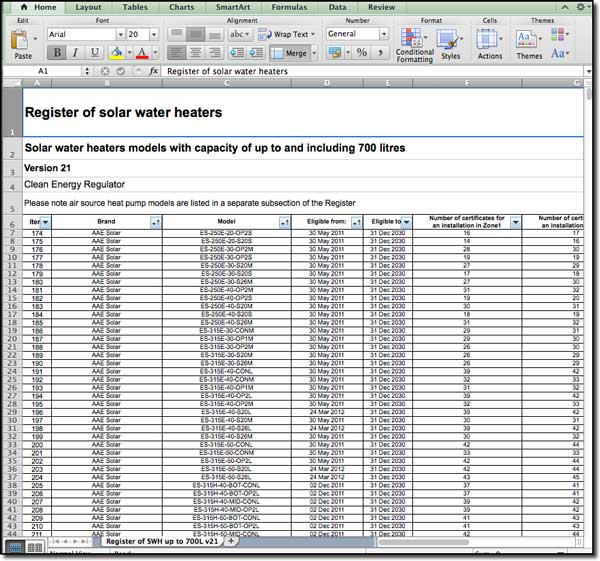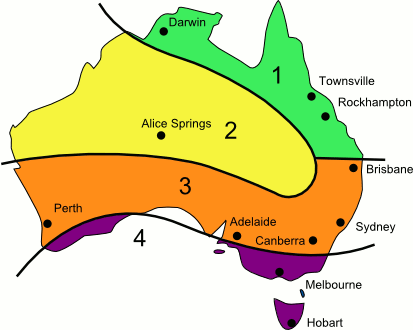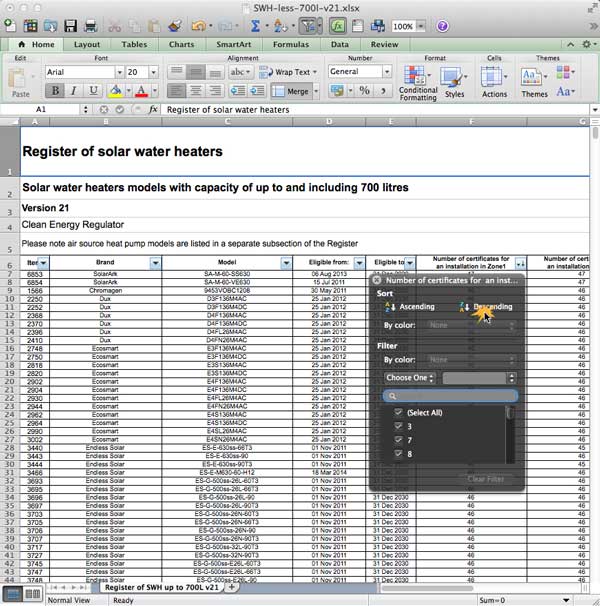
Is the evac tube system really more efficient than the flat plate system you have been quoted? Here’s how to find out…
When you are looking to buy a solar hot water system for for home, one of the most important things to check (apart from the price) is the efficiency of your Solar Hot Water System. The more efficient your system is, the better it will be at converting the sun’s heat to piping hot water, which means you will use your gas or electric boost less.
But with thousands of models of solar water heaters on the Aussie market, from flat plate or evacuated tube, to heat pumps it can be difficult to know how to find the most efficient solar water heater. Especially when each sales person says their technology / model is the most efficient! They can’t all be right…
Well as luck might have it, before a solar water heater can go on the Australian market, the government has to test it for efficiency.
They publish a nice Excel spreadsheet of all the results here. (Click on the link that says “Solar water heater models with a capacity of less than 700L” to get the spreadsheet.)
Here’s how to use the Excel spreadsheets to find the most efficient water heater for your home.
1. Decide how big your solar hot water system should be. Let’s say you’ve decided that you need a system of approx 300 litres.
2. Open up the spreadsheet I just mentioned in Excel.
3. You’ll see a huge table like this:
This table lists every hot water heater in Australia. The last 4 columns are the number of STCs you can get for installing that hot water heater in each of the four “STC postcode zones” in Australia. Without going into detail about STCs, you just need to know that the higher that number, the more efficient the water heater will be, and the bigger your solar hot water rebate will be.
4. Use this picture to find your STC postcode zone:
5. Use the “Filter” function in MS Excel to “sort by descending” for the column that matches your postcode zone:
Now you’ve got a list of solar hot water systems in order of their efficiency for your local climate zone.
If you are comparing specific models you can search for their model numbers, and find the most efficient.
If you are doing a more general search, you can use the Excel filter to only show model numbers that have the system size in their model number.
For example a quick browse of the list will show that 315 litres is a common size close to the 300 litres we decided we needed earlier. If we click on the header of the “model number column” and specify to only show model numbers that “contain 315” we get a list of 315 litre solar hot water systems in order of efficiency. Interestingly we learn that the most efficient 315 litre system is the:
Endless Solar ES-G-315ss-32L-60T3 with 54 STCs in Zone 1
Which is a 315l tank with 32 evacuated tubes and a gas boost.
Compare this to a similar system towards the bottom of the list:
Zen Home Energy ZEN315-30SS-G26N with only 24 STCs in Zone 1
Which I believe is also a 315l tank with 32 evacuated tubes and a gas boost.
The government’s’ figures are telling us that the Endless Solar system performs much better than the Zen – even though their specs look almost identical to the layman!
In real terms this means that you can expect this particular Zen model to provide about 67% of your water heating energy in Zone 1, and the Endless Solar, closer to 90% in Zone 1.
(To be fair, there are other Zen models available with better STC scores – up to 37 in Zone 1 – so those may be a better choice, but it seems they still can’t touch the top rated Endless solar systems.)
The moral of the story – if you are looking to buy an evacuated tube hot water system because efficiency is important to you, then it really matters which brand and model you buy!
So now you know how to find the most efficient solar water heater, have a look through the list, search for sizes or search for model numbers that you have been quoted and find out what the efficiency of those systems really are. Basically the more STCs you get the less you are going to be spending on gas or electricity to boost the water heater.
It is also a good way to double check salesmen’s claims that their heater is the most efficient. When I bought my flat plate system I discovered that it was at least as efficient as many of the big brand evac tube tube models that cost thousands of dollars more.




 RSS - Posts
RSS - Posts



You stated ‘the lower the STC number, the more efficient it will be’. Surely this is meant to say the higher the number, the more efficient it is?
Oops! Fairly fundamental error on my part – now fixed! Where do I send your bottle of wine for spotting the best typo of 2014? 🙂
! How does one judge the “best” typo??
And isn’t —-> “The more efficient your system is, the better it will be at converting the sun’s heat to piping hot water, which means you will use your gas or electric boost less.” a non sequitur in any case?
eg. If you heat three times the hot water you need at half the ‘efficiency’ (and keeping in mind that unlimited sunlight is free) has got to be more efficient that heating half the water you need at twice the ‘efficiency’ ~ particularly in terms of needing to use booster systems.
No?
…and in terms of ‘cost-efficiency’ you can’t beat a roll of poly-pipe and an oversized 2nd-hand glass cylinder. About $150 all-up.
The link for the spreadsheet appears to be broken ):
Check here, Russel:
http://www.cleanenergyregulator.gov.au/RET/Scheme-participants-and-industry/Agents-and-installers/Small-scale-systems-eligible-for-certificates/Register-of-solar-water-heaters